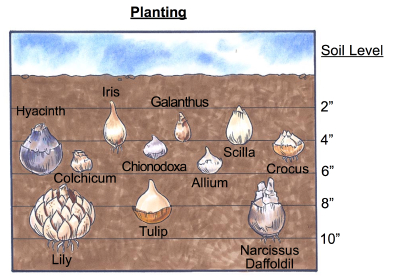Amaryllis flowers are one of the most beautiful flowers in the world. The bulb is so big because when it blossoms in Spring, each bulb will produce three red and white flowers. Our Amaryllis was planted in the Sensory Border flower bed.
Next to our baby, we planted some hyacinths. The most common hyacinth is the Dutch flower although it's origins are native to south west Asia. It is a garden flower that ranges in colour from purple to white. Our hyacinths were planted in a square in the border.
In the circular flower bed, we planted the tulips. When these blossom, they will create a circle of colour in the courtyard. They were planted in a spiral in the flower bed, which will be transformed into a bright pattern of flowers come Spring.
We also did some indoor planting this week. We planted Paper White Daffodils, Onion Sets and some Hyacinths in pots, which were left in a cool dark place. This was done to stimulate the conditions the plants would experience if they had been planted outside: the darkness inside matches the darkness of the plant underground, all the sunlight blocked out; the extra warmth from radiators in the room also help the plants to warm to the soil and help their roots create foundations for when they begin to grow.
Each pot was filled with compost. The Onion Sets were placed in circles on top of the compost. Their roots do not grow very far down in the soil so they needed only to be set in place rather than buried completely.
The Paper Whites were planted at a depth which equalled twice their height. These Daffodils are very pale but elegantly beautiful, and will bloom in early spring.
 |
| Onion Sets |
 |
| Paper Whites |
The four hyacinths that we planted indoors were an experiment to see which flowers would have the better growth: indoors vs. outdoors.
I have really enjoyed this module so far and will be sad to finish it in a few weeks, however I'm excited for our next class with more indoor planting and a trip to the 'Grow Your Own' Exhibition in the Science Gallery in Trinity College!








.JPG)







